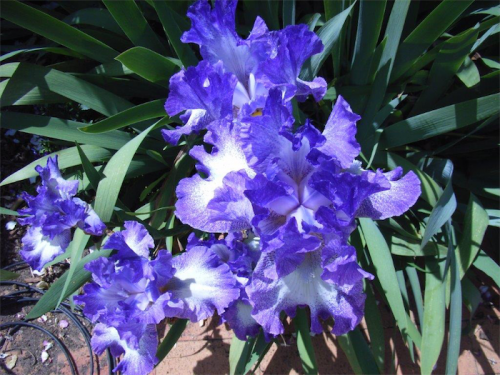BLOSSOMS from the flowering apricot are tricking some people into believing spring has come early this year.
The trees in blossom over the last few weeks are almost certainly the flowering apricot, Prunus mume, which always flowers from early to mid-winter.
Prunus mume flowers on the new season’s wood, so it is best to prune immediately after flowering. If the tree is pruned in spring it will bleed profusely with sap, which can cause other problems.
It can also be pollarded, which is cutting back the branches almost to the main stem. This produces a mass of new growth and subsequently more flowers the following season.
I also recommend this process for Mop Top Robinias to keep them under control.
When the garden is rather drab, these flowering apricots brighten up winter with a splash of colour.
There are two main varieties; Prunus mume “Rosebud”, which grows to about 4m x 4m, making it eminently suitable for most gardens. Its large semi-double soft pink, delicately fragrant flowers are up to 2.5cm across and its leaves turn to a rusty-bronze in autumn. And there’s Prunus mume “Splendens”, which has an abundance of double, deep-pink flowers with yellow stamens in clusters along the bare stems. The delicate fragrance is particularly evident in the evening.

I always say that anyone can have a spring garden, but the secret is to have an equally floriferous garden in summer and autumn. Bearded iris are always unpredictable and can flounce into flower unexpectedly in late winter, although the main flowering time is mid-spring.
I will not even attempt to mention any specific varieties, but with coloured labels it is easy to work out a colour scheme. Gladioli are back in vogue.
Rather than planting the corms all in one go, plant a few each week. This will result in flowers over a long period. Lilliums are a florist’s favourite, as they can be picked when in bud and brought into the home, quietly opening over a week or more. If you are planting agapanthus try to find the sterile varieties. The ordinary agapanthus produce an enormous quantity of seeds, which spread easily into bushland and are starting to cause environmental problems.
In some areas they are classified as a weed, such as in the Blue Mountains National Park. Local garden centres will have summer flowering bulbs in stock for planting now.
Jottings…
- Prune new roses at planting time: firstly prune any damaged roots, then cut stems back to 20-25cm above ground level.
- After the recent rain it is an ideal time to hoe weeds. Also to loosen up mulch that may have compacted to allow better rain penetration.
- Plant the amazing new Daphne “Perfume Princess”, a cross between two greats, Daphne bholua and Daphne odora.
- Paul Tyerman will talk on summer bulbs at The Garden, Parkwood Nursery, 10.30am, on Wednesday, July 15. Book at 6254 6726.
Who can be trusted?
In a world of spin and confusion, there’s never been a more important time to support independent journalism in Canberra.
If you trust our work online and want to enforce the power of independent voices, I invite you to make a small contribution.
Every dollar of support is invested back into our journalism to help keep citynews.com.au strong and free.
Thank you,
Ian Meikle, editor




Leave a Reply